

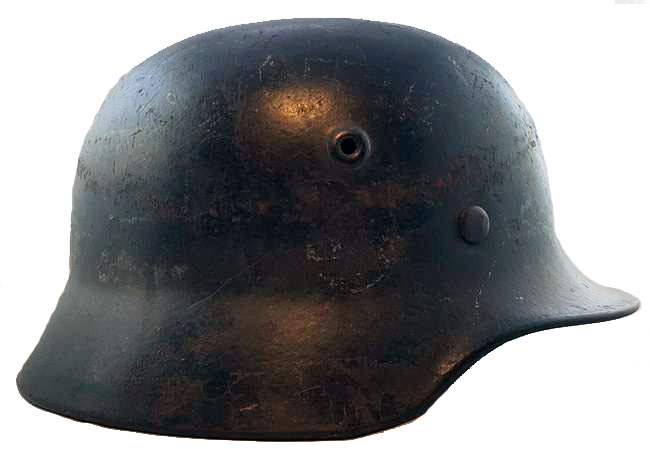
M40 German helmet. This example has remains of a decal on the right side and evidence that it once sported a wire covering.
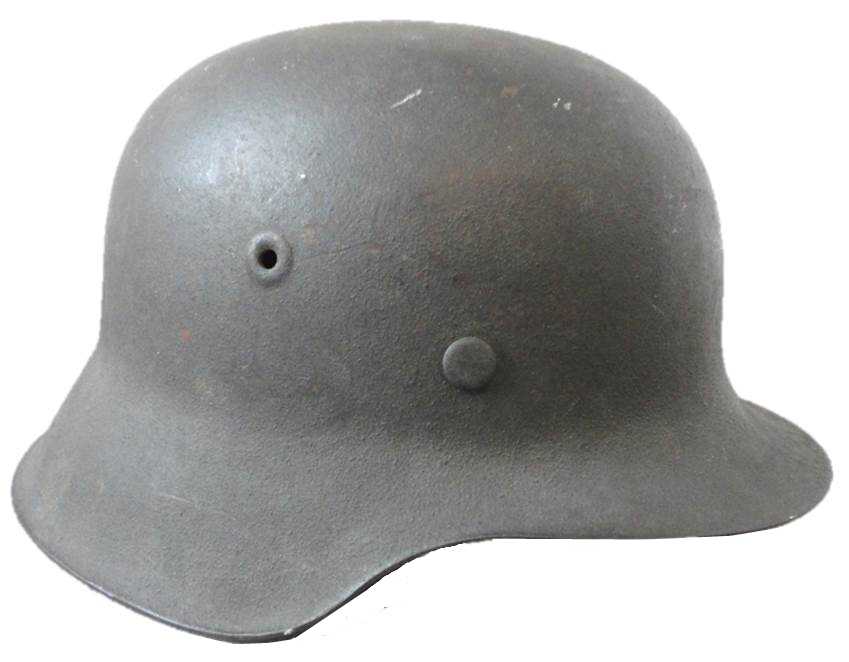
Late-war M42German helmet. This example was captured and sent home by a veteran from North Carolina.
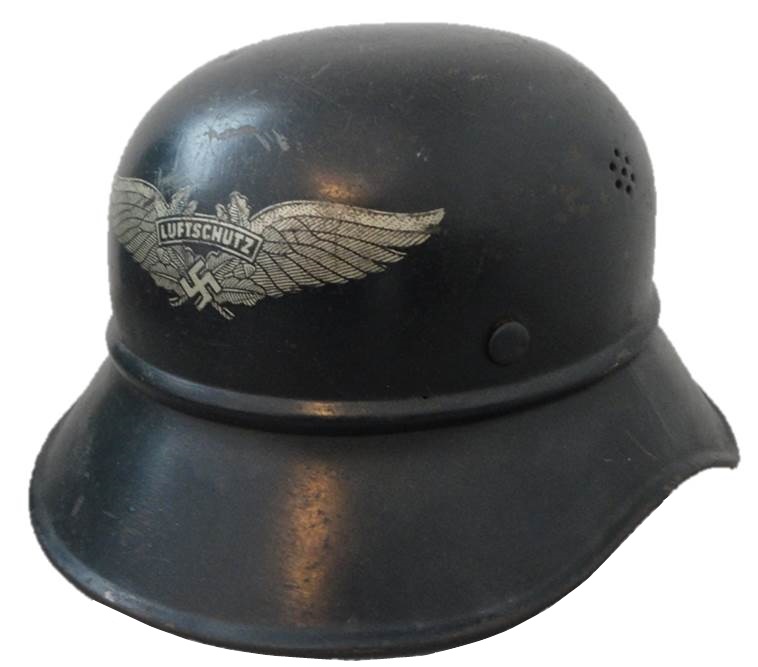
Luftschutz (Civil Defense) helmet, as worn by civilian volunteers and anti aircraft helpers. This stamped helmet is lighter than a combat helmet. The particular example was brought back by a Kenosha veteran.
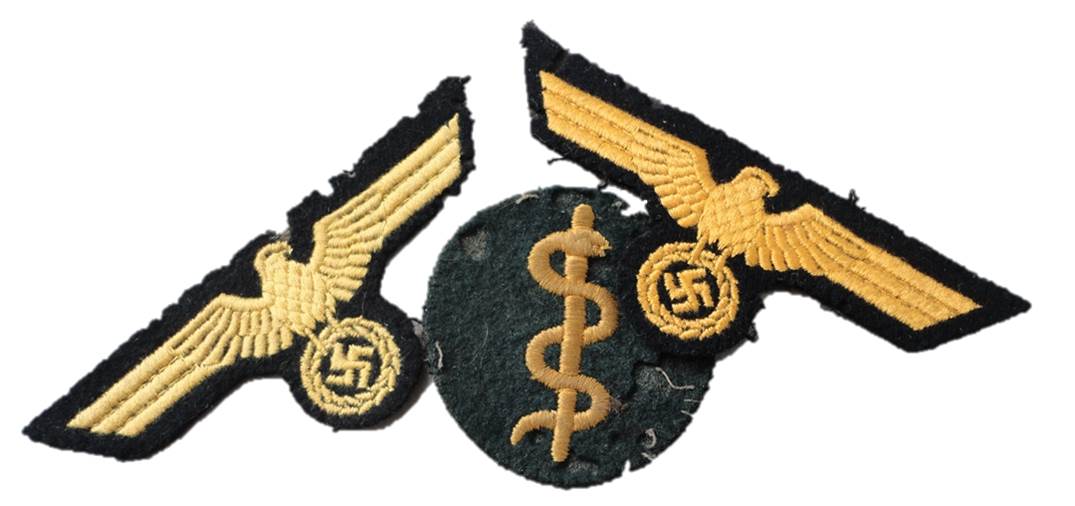
Breast eagles and medic qualification insignia of Germany's Navy (Kriegsmarine).
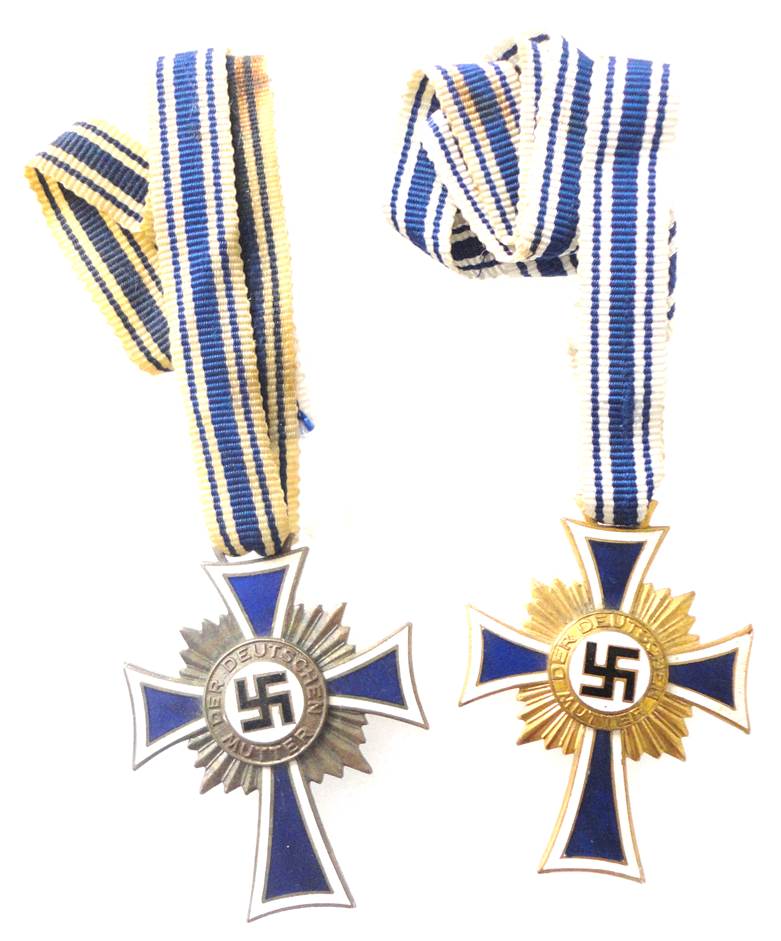
German Mother's Crosses. These were awarded for having specified number of babies. This was intended to promote population growth. Shown above are the Bronze (4-5 children) and Gold (8+ children) awards.
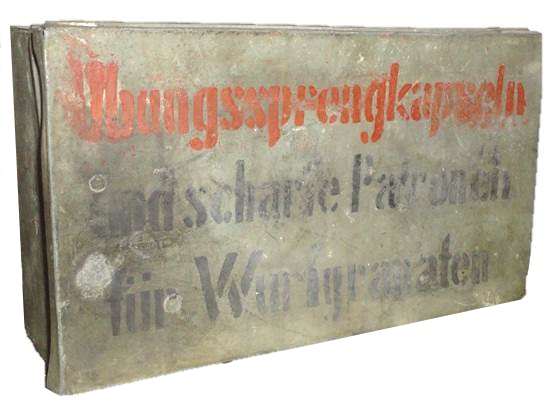
German box for rocket grenade fuzes.
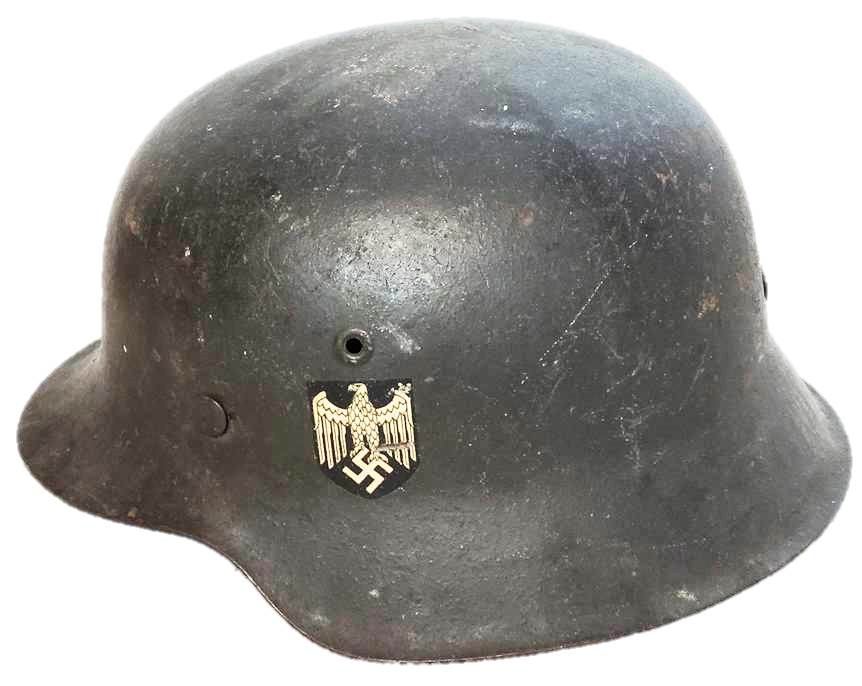
M42 German helmet with Army decal
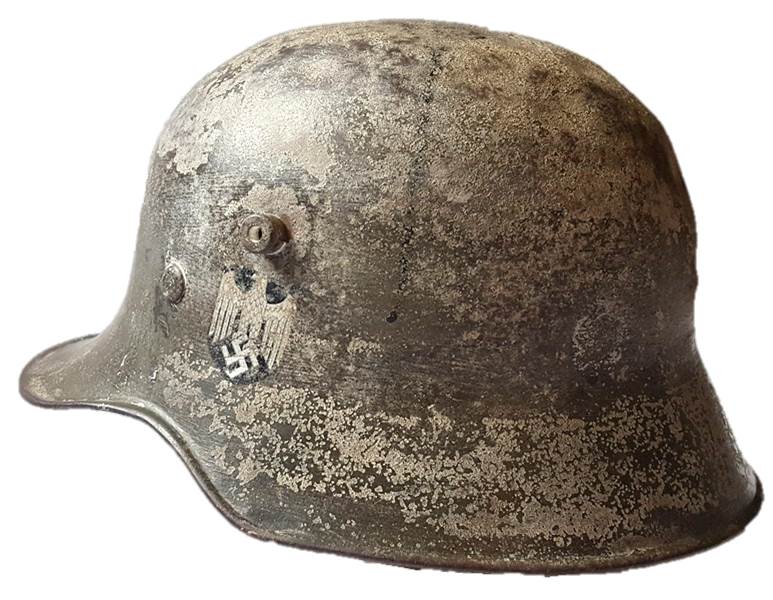
A very scarce interwar model helmet, camouflaged for winter use in World War II. It has decals on both sides to indicate army use.
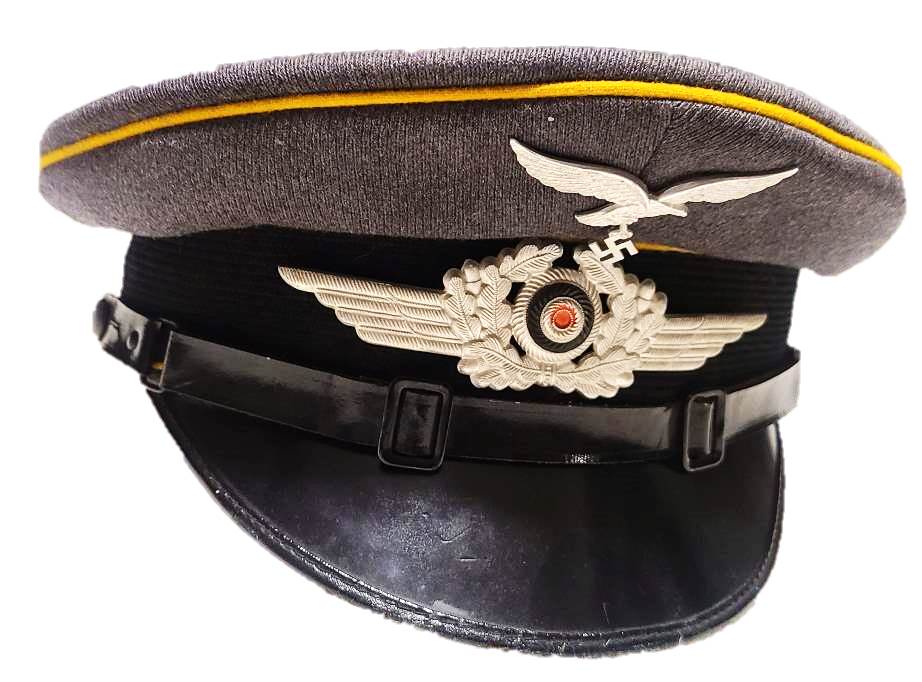
Enlisted NCO cap for a Luftwaffe pilot or paratrooper, as indicated by the yellow piping.
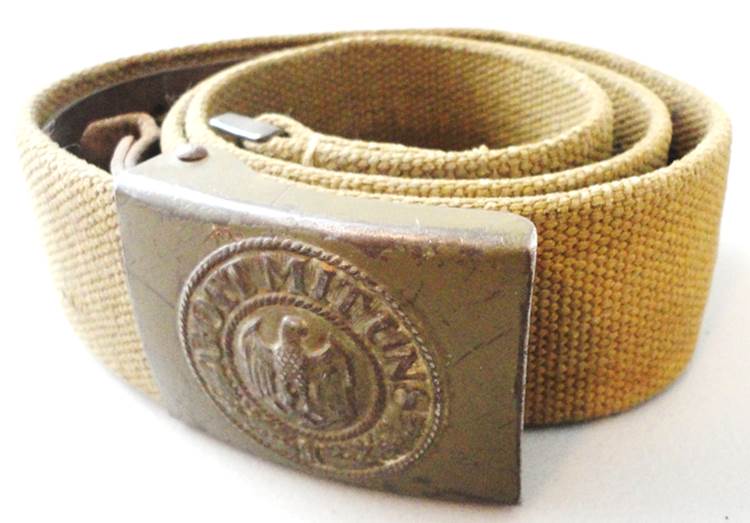
German soldier's belt. It is the "tropical" version made of heavy woven cotton rather than leather. These were issued in Africa and Italy.
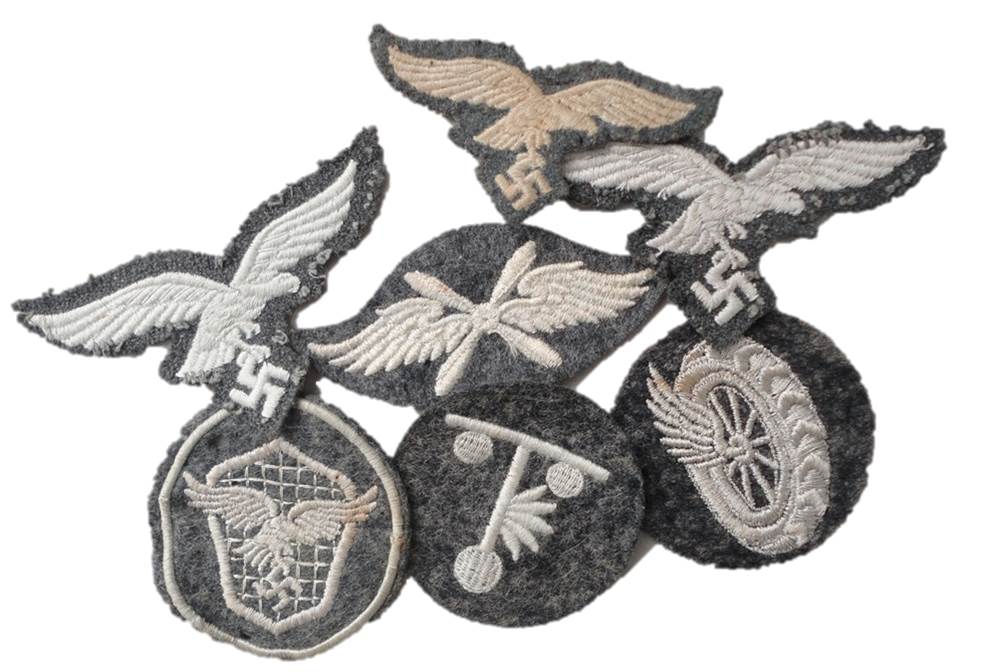
Various insignia of Germany's Luftwaffe (Air Force). The eagles were worn on uniforms and caps; the other insignia denoted specialized trades such as being a flight crewman, driver, or radio operator.
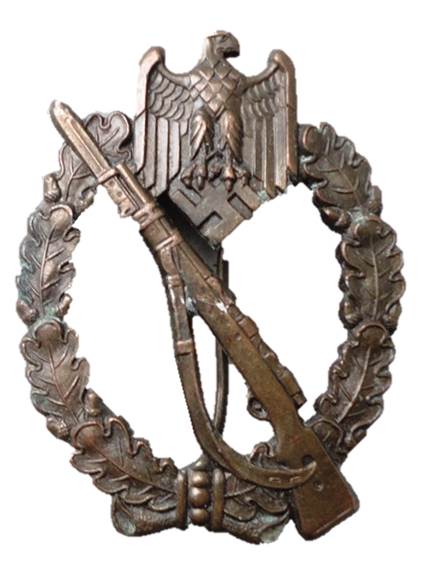
German Infantry Assault Badge. This was awarded for participation in attacks against enemy forces.
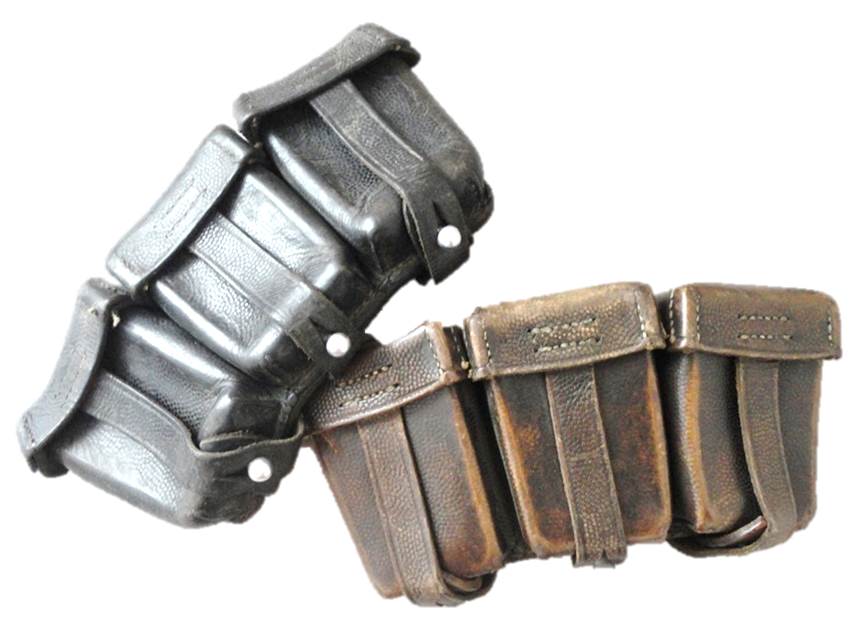
Leather ammunition pouches for the K98 rifle. Each individual pouch held two five-round clips of 8mm ammunition.
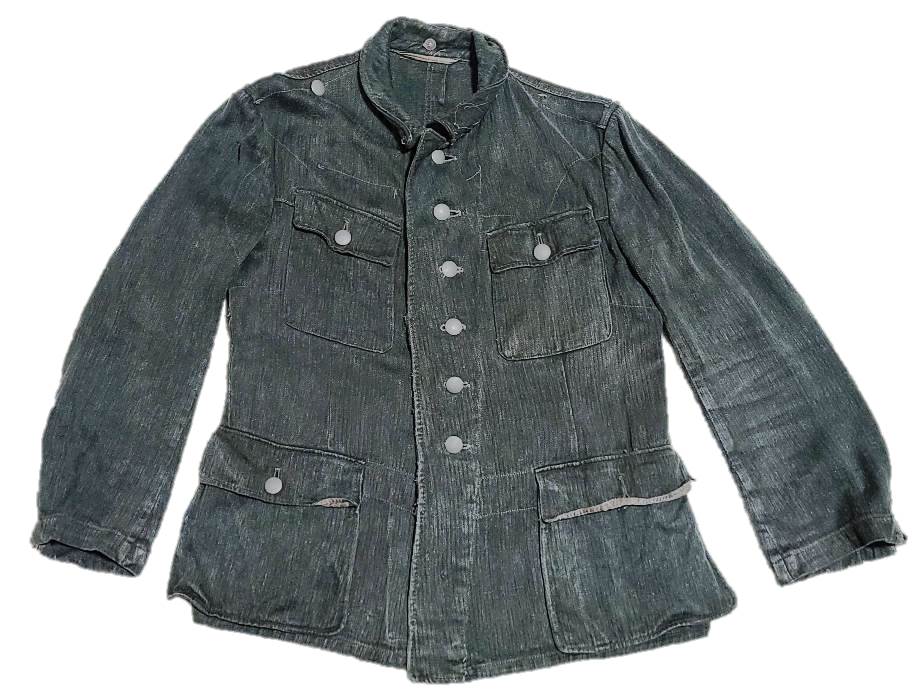
M1942 pattern HBT uniform jacket. These were first issued as work coats, like this one, and then as combat uniforms. This examples was sourced in Norway and shows evidence that collar tabs were once present.
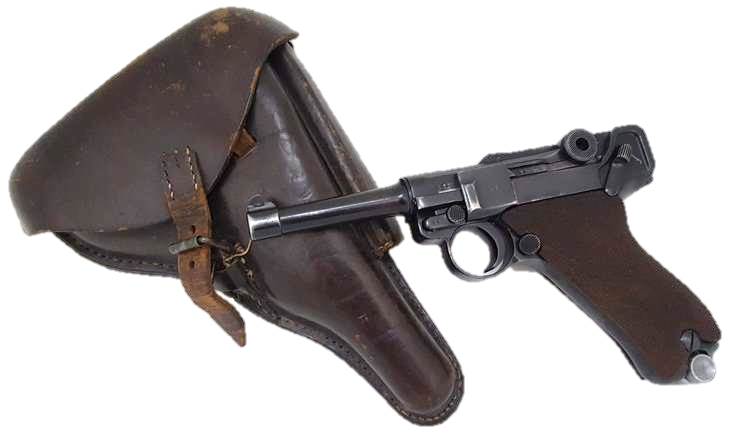
P08 Luger pistol and holster. This was brought back from WWII by a Kenosha-area veteran.
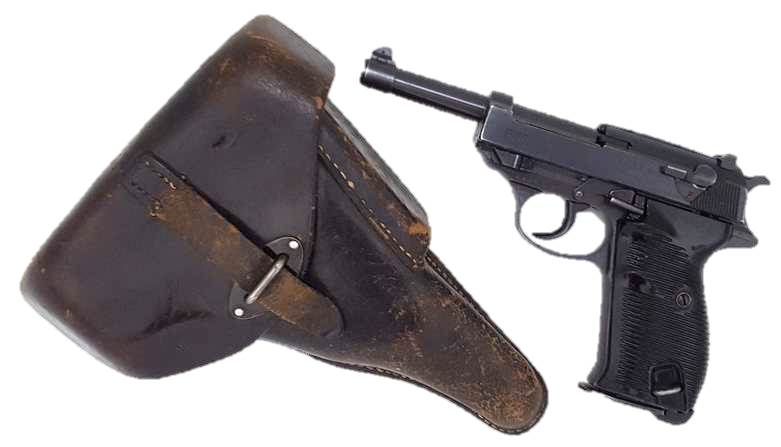
The P08 was succeeded by the P38. This 1944-dated example was brought back from WWII by a local veteran.

K98 rifle. These 8mm bolt action rifles were the standard guns of the German army. This example was brought back from WWII by a Racine veteran.
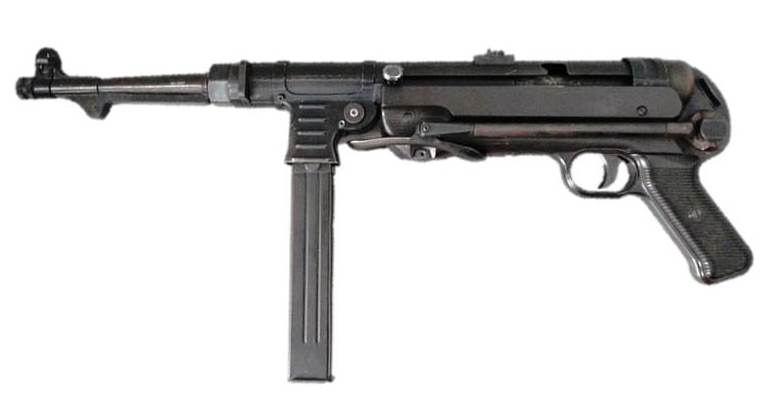
The MP40 machine pistol, popular in the German ranks in World War II. This is a blank-firing replica, faithful to the originals in every way, produced for the film industry and collectors in the 1960s. The MP40 fired 9mm pistol rounds and had a folding stock--features that were adopted by many contemporary manufactures of submachineguns.
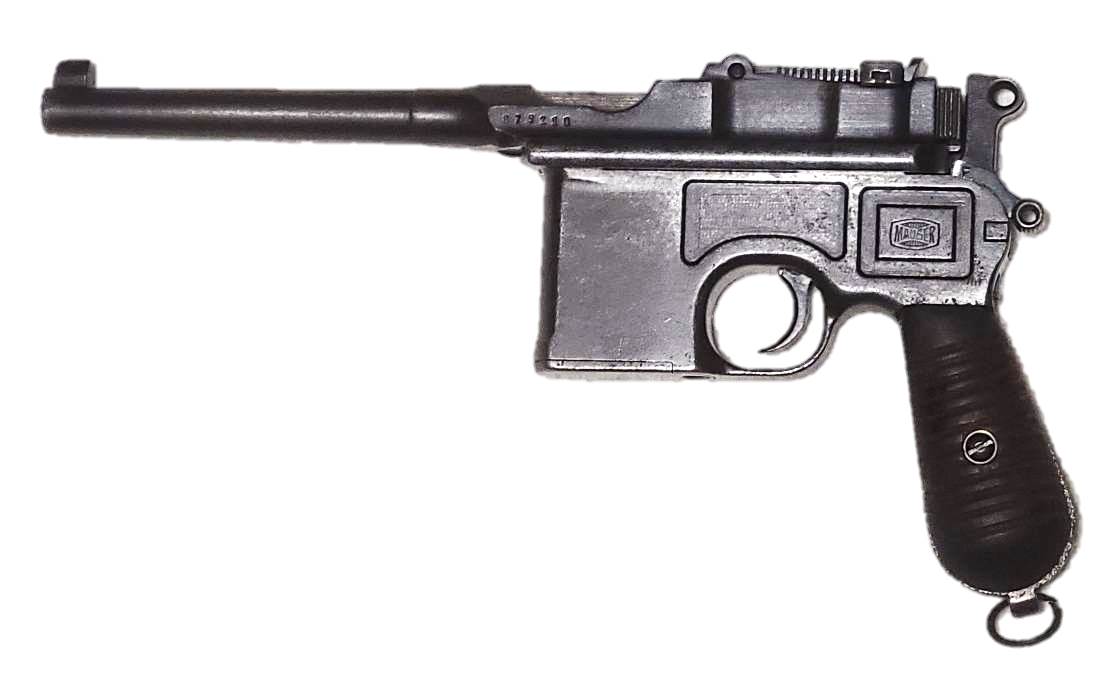
M30 version of the C96 Mauser Broomhandle pistol. This was one of the earliest successful automatic pistols, seeing use in militaries around the world from before 1900 to well after World War II. This German example was one of the last made, in the 1930s, before production shifted to other pistol designs. Quantities were used in World War II by Germany and other countries, such as China.
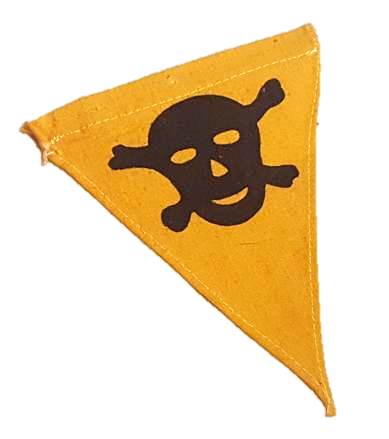
German mine marking flag
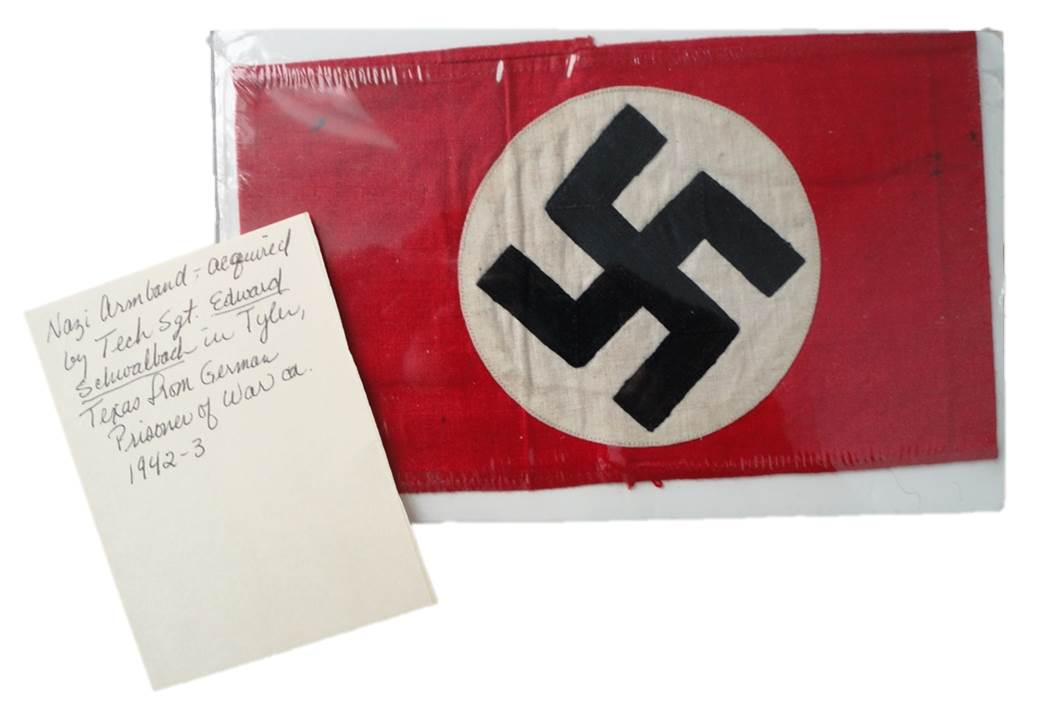
Nazi Party armband. It was "liberated" from a German Prisoner of War by a Texas veteran.
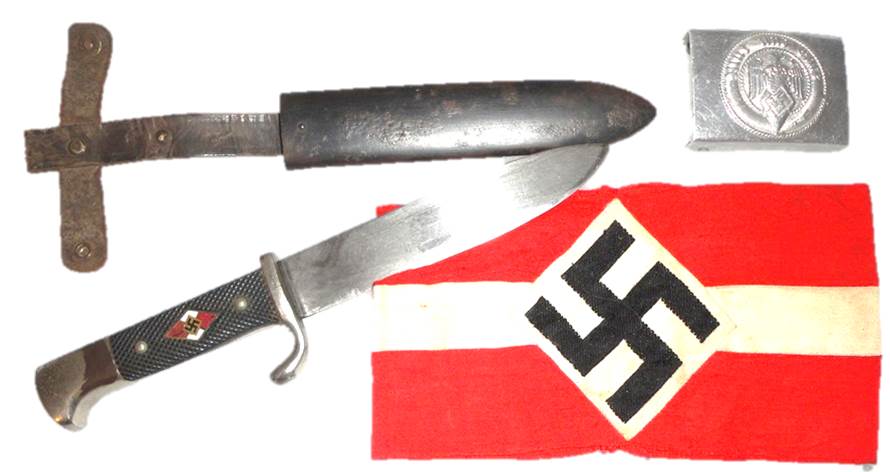
Knife, armband, and belt buckle of the Hitler Youth. This paramilitary group required most boys aged 14-18 to join from the early 1930s through the end of WWII. These are artifacts brought back by US veterans after the war.
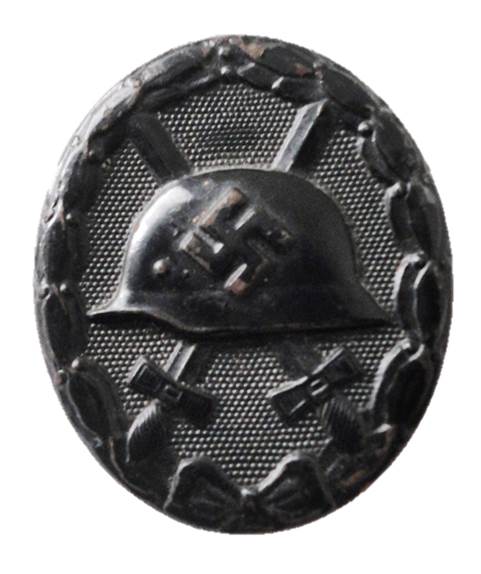
The German Black Wound Badge, awarded for 1-2 wounds in combat.
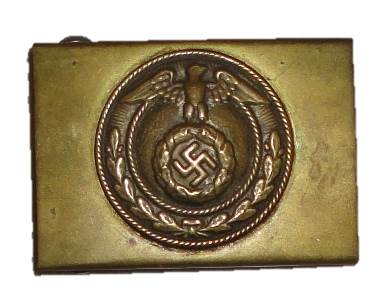
Early political leader's belt buckle.

A German officer's leather riding crop. This was liberated from Hitler's mountain retreat, Berchtesgaden, by an Ohio colonel in an anti-aircraft regiment during WWII.
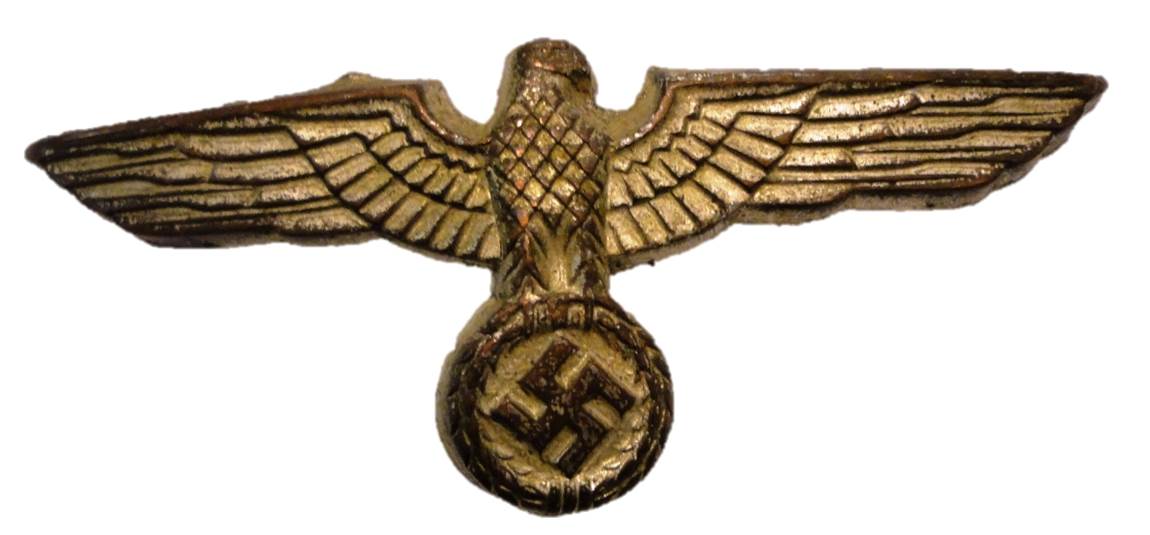
Army officer cap badge.
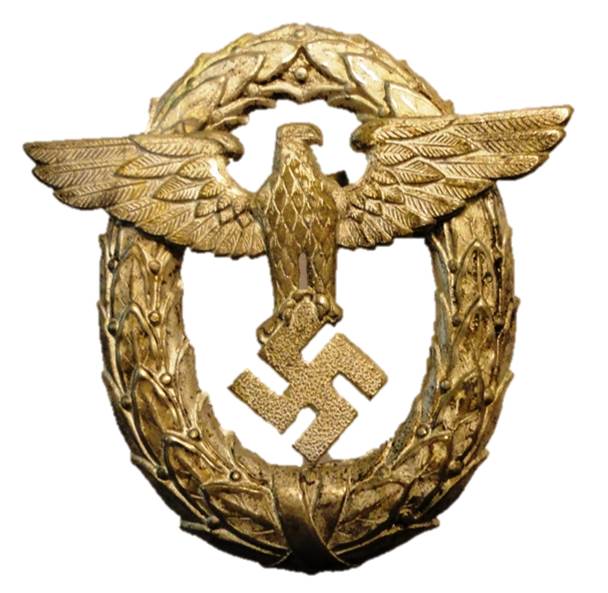
Police officer's cap badge.

Bayonet for the K98 rifle. This example was shipped home just after D-Day, 1944. The veteran, an Illinois lieutenant, was killed just days later and posthumously was awarded the Silver Star for bravery.
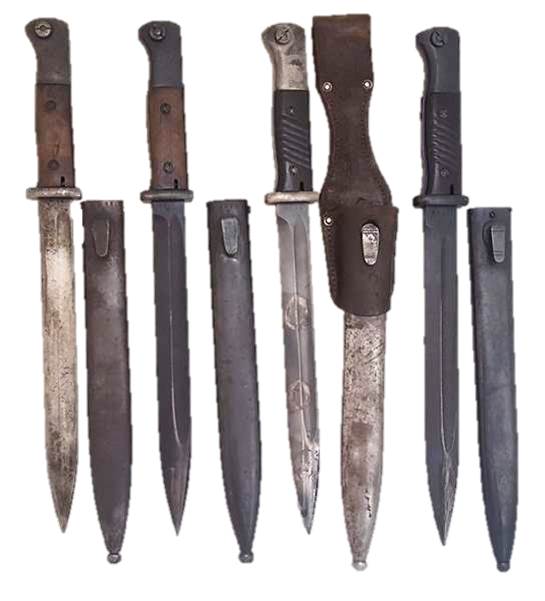
Mauser bayonets and scabbards. From left: 1930 date, 1936 date, 1940 date, and 1944. These progressed from wood to Bakelite grips.
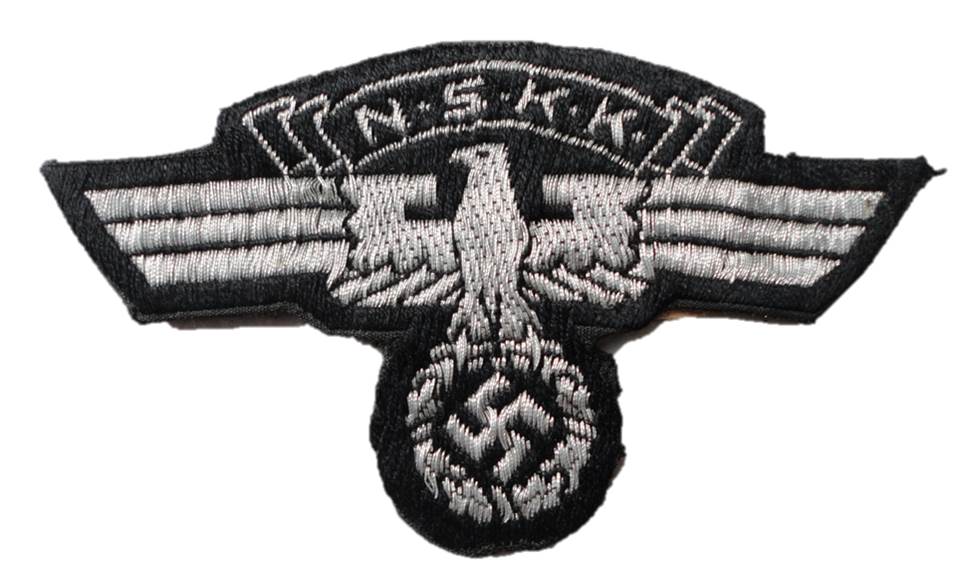
Badge of the Nazi Motor Corps, which trained people how to drive in the years leading up to WWII.
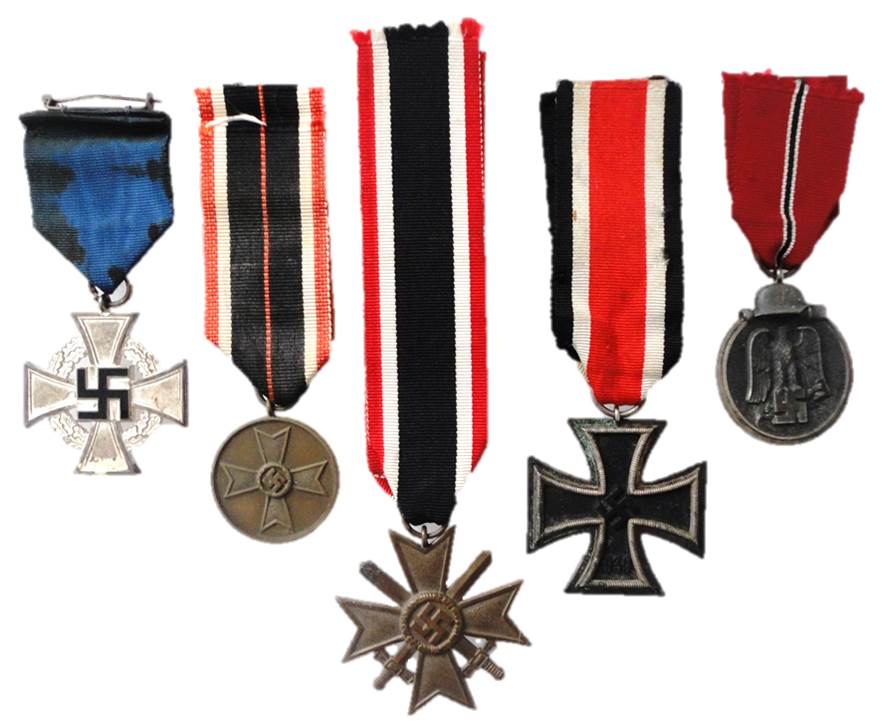
Selection of WWII German medals brought back by US veterans.
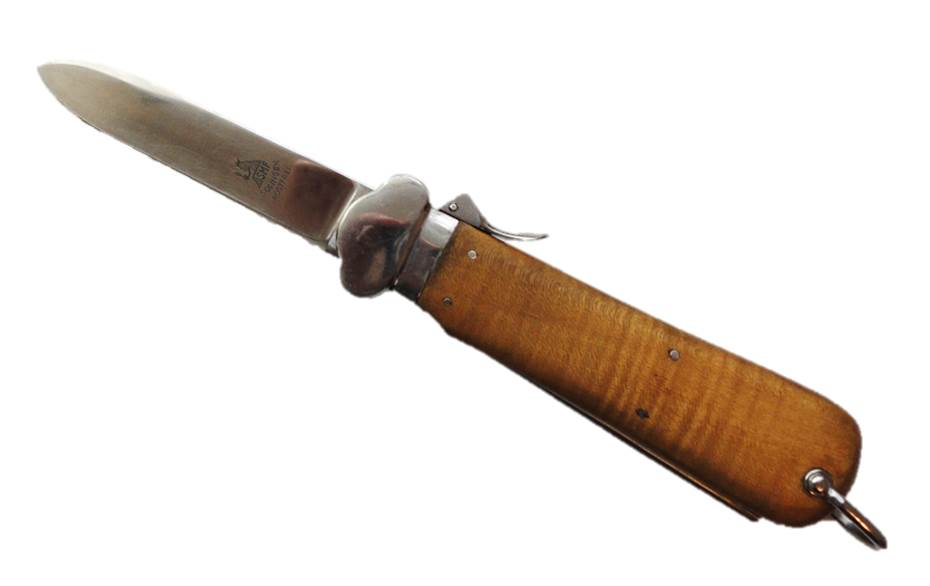
A Luftwaffe gravity knife. These large knives were opened by pressing the lever and pointing it downward, allowing the blade to slide into position and using only one hand.

Nazi Party membership pins. These were worn by civilians to show support for their party and government.
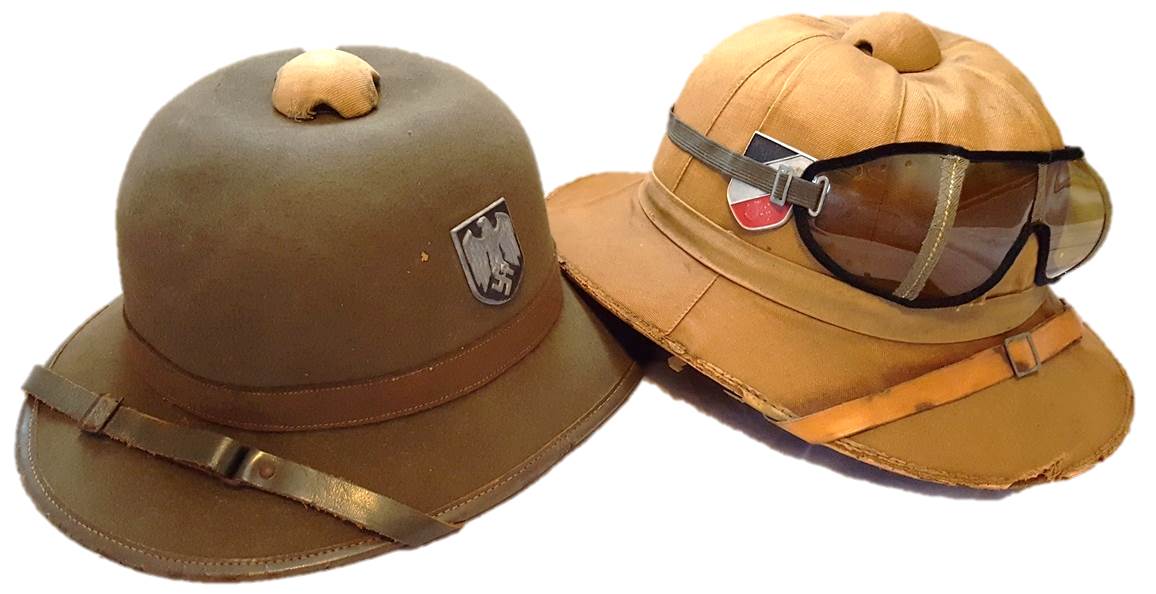
Pith helmets as worn by the Afrika Korps under General Rommel. These were lightweight hats that offered protection from the sun but little else. The one on the right is made from cork, while the helmet at left is a later version constructed from pressed felt. Also shown is a pair of disposable dust goggles commonly used in desert climates.
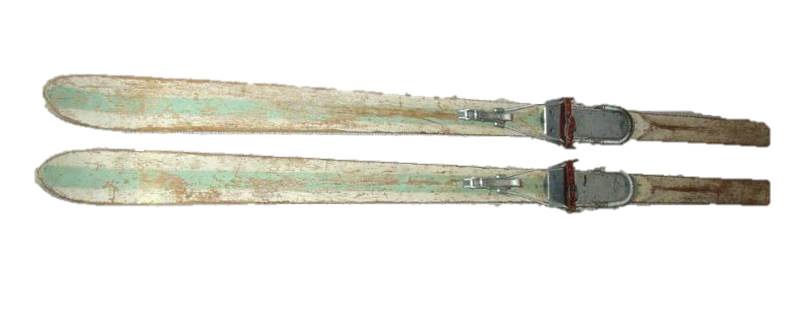
German skis used by mountain troops. These were captured in Italy and brought back after WWII, and used by the author's grandfather on the Rocky Mountain slopes of Colorado and Montana!


Carcano carbine of the Italian armies. This short version the the Italian battle rifle was issued to cavalry and other mounted units, and featured a folding bayonet under the barrel rather than a removable one. This example was brought back from WWII by a Zion, IL veteran and was produced in 1942.

Italian M33 steel helmet. This was the standard combat helmet of the Italian army. After WWII, large numbers of these helmets were exported and reused in conflicts in Balkan countries.
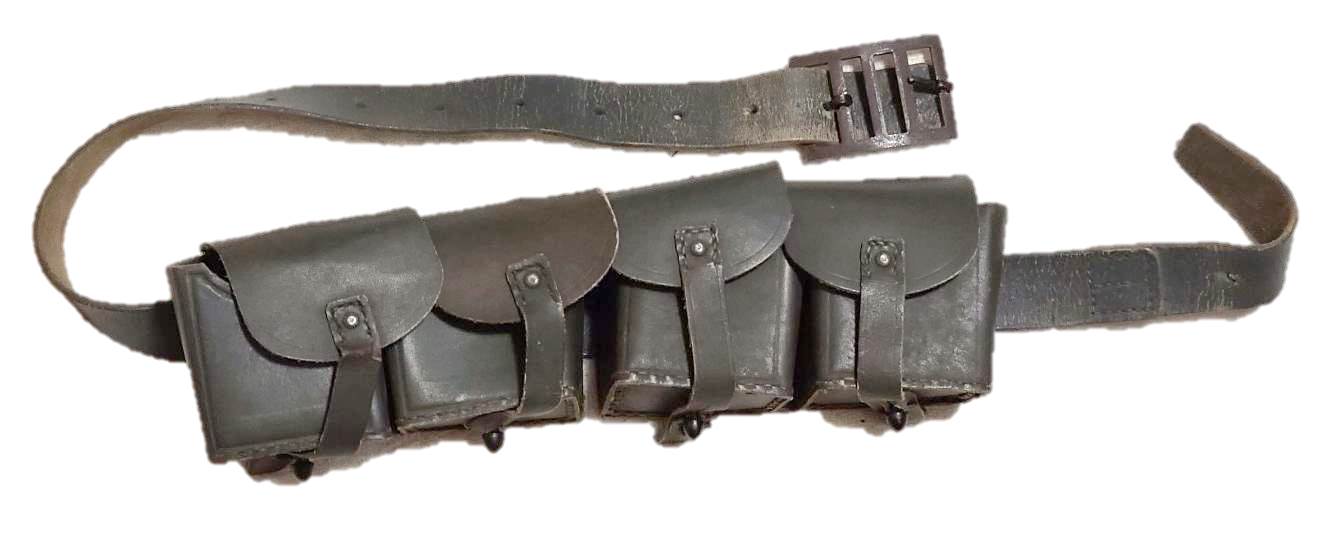
Italian rifle cartridge pouches and belt.


A Japanese Type 99 rifle, the standard late-war battle rifle of Japanese forces. This example was brought back in the immediate postwar occupation period by a Kenosha veteran of the 24th Infantry Division.
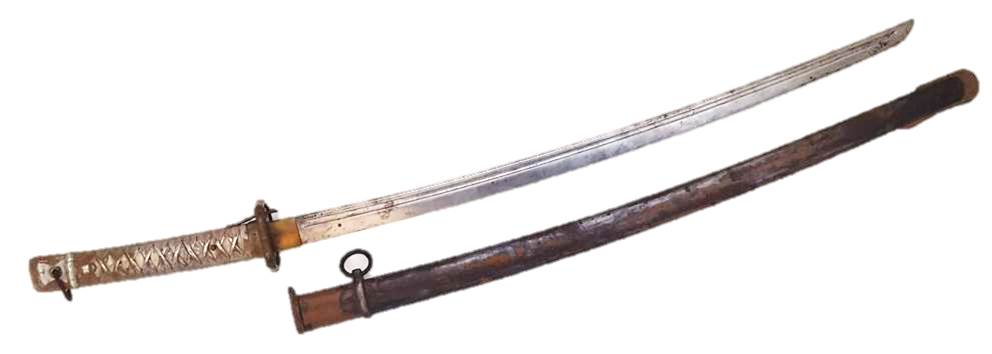
Type 95 NCO sword. This late-war example was made at a Tokyo arsenal.
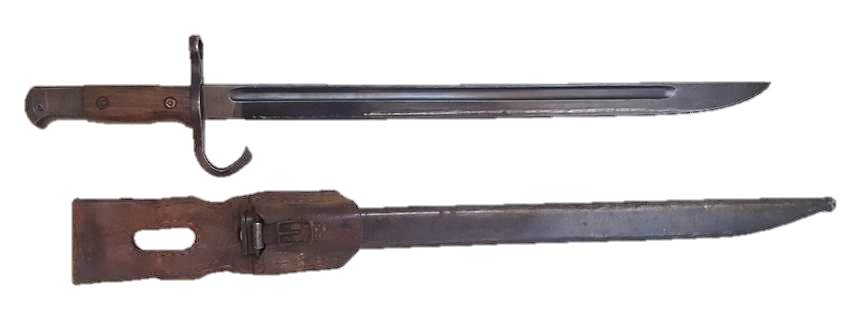
Japanese Type 30 bayonet, made in occupied Korea during WWII.
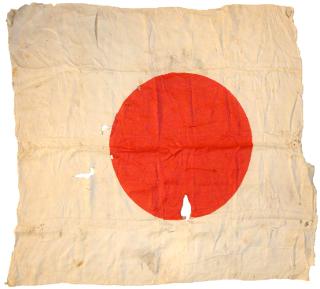
Japanese flag brought home by a Texas veteran of the Joint Assault Signal Company (JASCO) who saw action at Leyte and Iwo Jima.
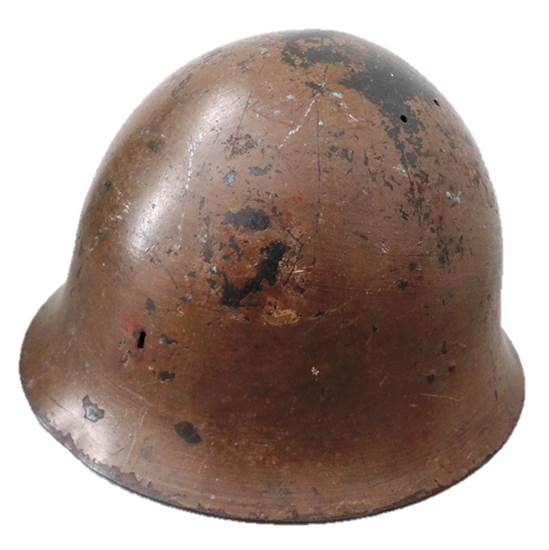
Japanese helmet brought back by a Seabees veteran from the Solomon Islands.
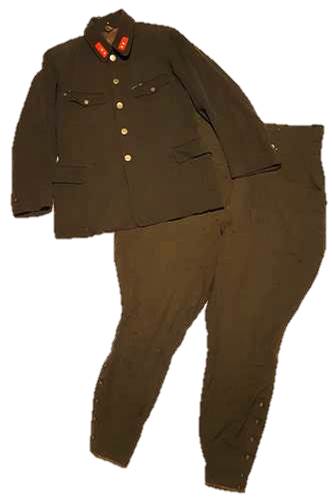
A Type 98 privately-tailored Japanese officer's jacket and trousers. PFC ranks adorn the collar, but these were likely added sometime later to the uniform.
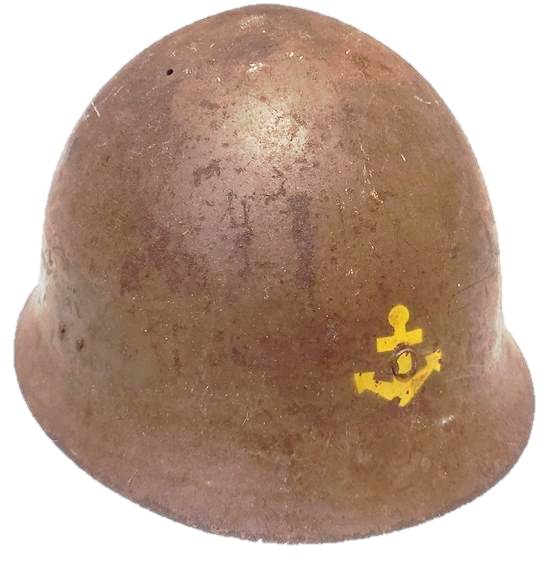
Imperial Japanese Navy Type 90 helmet
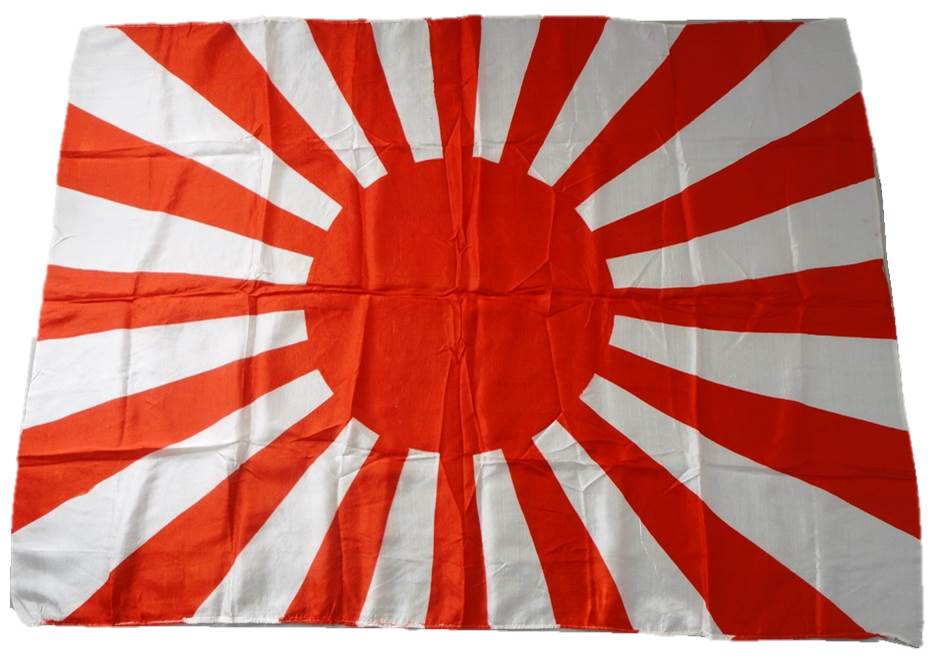
Japanese silk flag. These were often carried by individual soldiers.
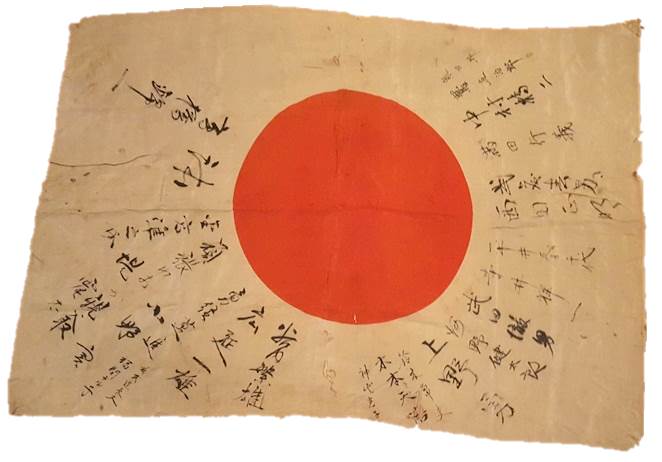
Japanese flag with writing. Many were adorned with good-luck messages from families and friends. Many, too, were adorned by servicemen after the end of the war to sell as souvenirs!
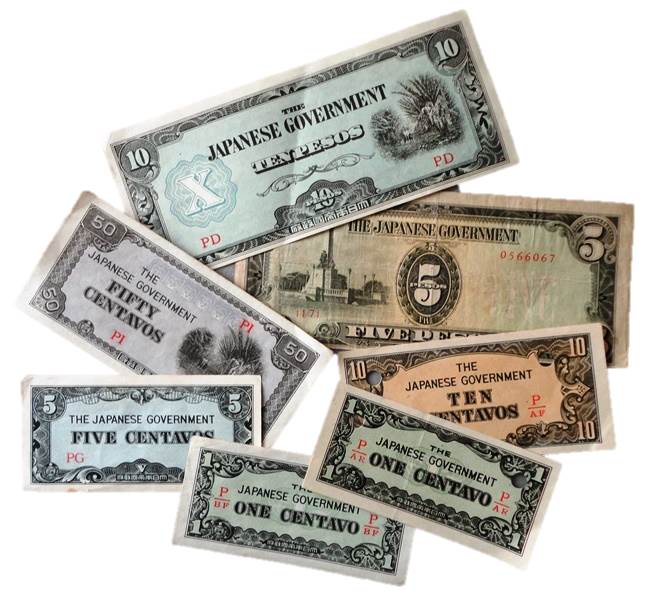
Japanese Invasion Money for the Philippines. When taking over a country, the Japanese would suspend use of native currency and instead print their own notes, each marked "The Japanese Government."
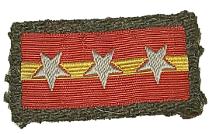
WWII Japanese collar rank for a Sergeant Major
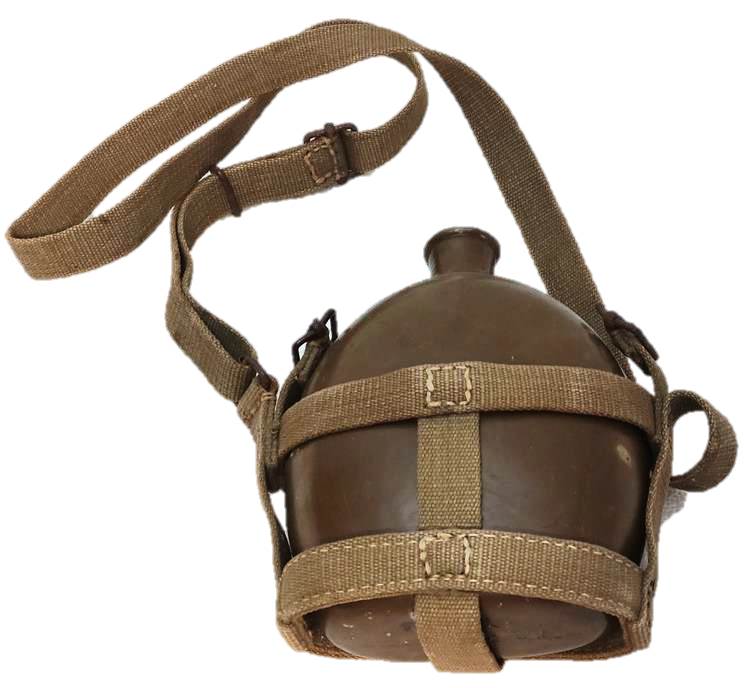
Japanese canteen and carrier

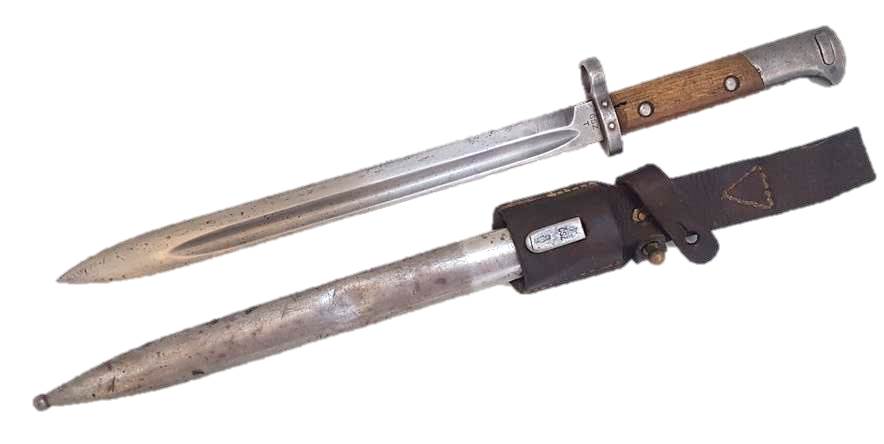
Czechoslovakian bayonet for the V24 8mm rifle. This example is unit marked to a telegraph battalion.

Cap badge for Ukrainian volunteers in the German forces.
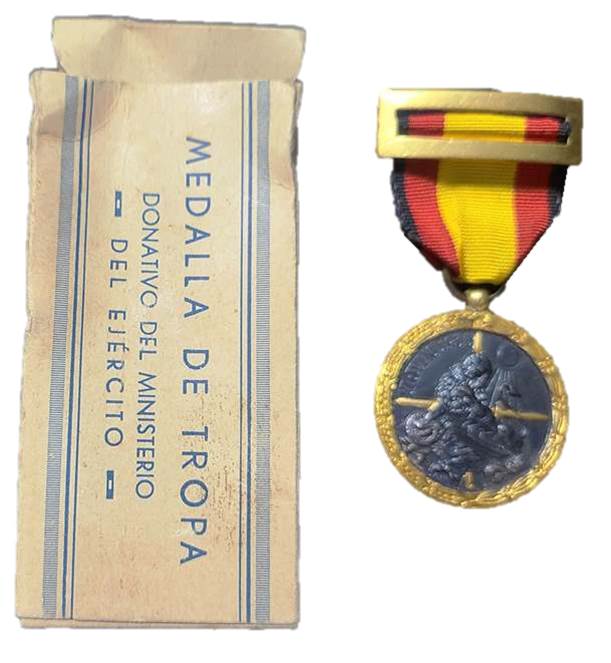
Spanish Civil War veteran's medal
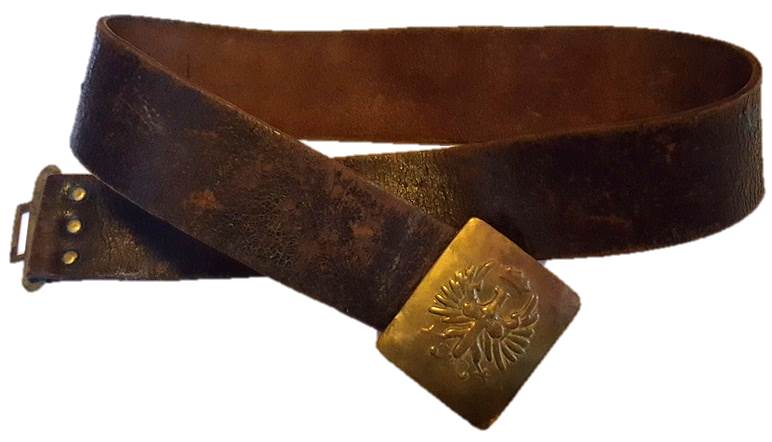
Belt and buckle for the Spanish military under Franco's fascist regime. While technically neutral in WWII, Spain both received and sent aid to the Axis.
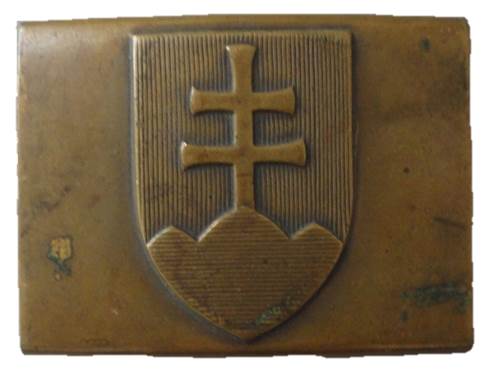
Slovakian belt buckle worn in WWII.